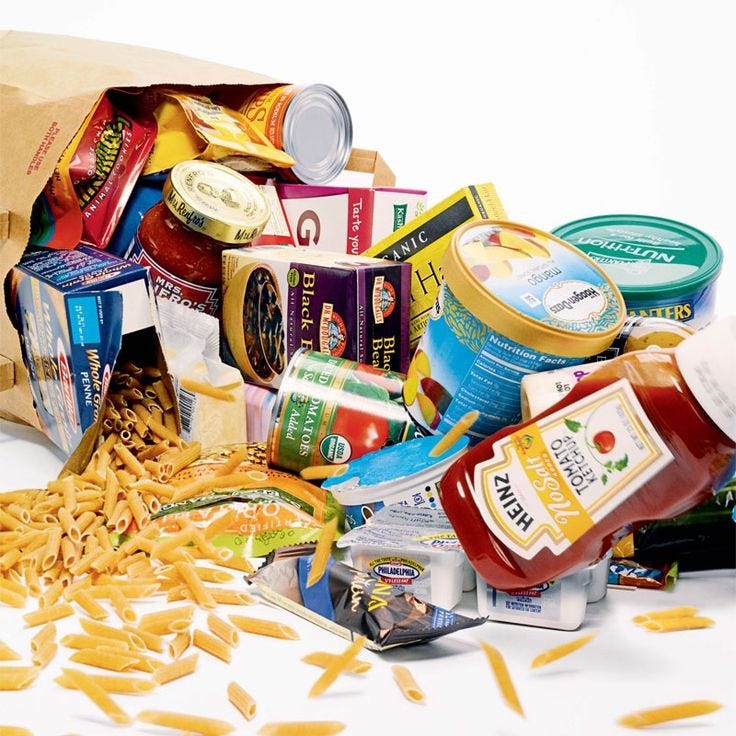Navigating the Food Industry: What You Need to Know
Written on
Chapter 1: Understanding Food Trends
In the wake of lockdowns, the food blogging sphere has seen an explosive growth. The surge in food influencers, bloggers, and startups dedicated to culinary trends and supplements has left no corner of this industry untouched. With new superfoods surfacing weekly and diets evolving, the definition of "healthy" seems to change constantly. The motivation for today's discussion arises from the rapid pace at which these trends are emerging.

Photo by Pablo Merchán Montes on Unsplash
While I could easily point fingers at the misleading claims found in advertisements and on product packaging, the reality is that there’s a complex web of factors at play. Those who orchestrate these marketing strategies often operate behind the scenes, manipulating information without our awareness. In a previous post, we explored personal development, food origins, nutrition, and supplementation. Today, let's focus on making wise food purchases that avoid marketing traps and misinformation.
Here are links to earlier discussions that I recommend reviewing for additional context:
- Ways to Glow Up This Year (Pt-2)
- Understanding Food at its Basic Level.
Instagram Profiles for Inspiration:
- deepakthakranfitness
- cheatdaydesign
- foodpharmer
As consumers, we usually consider factors such as nutritional content, budget constraints, preparation time, and versatility when shopping for groceries, snacks, and convenience foods. The crucial question is: how can we make well-informed purchases without sacrificing quality and nutritional value while still adhering to our other criteria?

Photo courtesy: Pinterest
Chapter 2: Key Considerations for Smart Shopping
To navigate this landscape, here are some vital points to keep in mind and investigate further:
Section 2.1: Serving Sizes
Understanding serving sizes is essential, particularly for snacks, sides, and condiments. Advertisements often depict excessive portions, misleading us into believing that a generous dollop of jam or peanut butter is standard. Always check the label for the recommended serving size as part of a healthy diet.
Section 2.2: Misleading Terminology
Terms like "healthifying" can mask potentially harmful ingredients. For instance, sugar can appear under various names, making it seem less prevalent than it is in a product.
Section 2.3: Greenwashing Tactics
Greenwashing is a common tactic where products are marketed as "healthy" simply due to their packaging or branding. For example, many consumers switch to brown or multigrain bread without realizing that the actual whole grain content is often minimal.
Section 2.4: Celebrity Endorsements
Celebrity endorsements can create an illusion of trustworthiness for a brand. However, it's vital to question the authenticity of these claims. Take orange juice, which is often marketed as healthy but may contain artificial flavors and preservatives.
Section 2.5: Trend Manipulation
The food industry frequently uses trending products to manipulate consumer interests. A new superfood may become a fad, leading to inflated prices and demand. Take muesli, for example—while it is nutritious, many packaged varieties are loaded with sugar and overpriced.
Section 2.6: Incomplete Information
The discrepancy between products like ice cream and frozen desserts exemplifies how consumers have been misled. Until regulations mandated clearer labeling, many products were sold under misleading names.
The first video titled "I'll die for those breadsticks pal #shorts" humorously showcases the allure of popular food items, emphasizing how our cravings are often influenced by marketing.
The second video, "How To Make a Fire By Rubbing Sticks," metaphorically connects to our discussion by highlighting basic skills and knowledge essential for making informed decisions in various contexts, including food.
Ultimately, the key to navigating the food industry lies in understanding how to read labels and recognizing marketing tactics. This post aims to raise awareness and encourage self-education, as our health rests in our hands.
What are your thoughts on these challenges we face in the food market? I invite you to share your insights and tips in the comments below. If you found this article valuable, please show your support with a few claps, and feel free to buy me a coffee if you wish. Your engagement is greatly appreciated!
xx,
Khushboo
Get my E-book here:
180° Your Life: A Reset Journey. Or, Buy Me A Coffee!
Buy Me A Coffee.